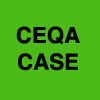(2012) , Cal.App.4th [No. F063534. Fifth Dist. Apr. 26, 2012, Opinion Certified For Partial Publication]
This case addresses what documents are properly parts of the administrative record in a CEQA case, and is useful for individuals preparing comments on environmental documents, CEQA consultants, Lead Agencies and litigators seeking to augment the administrative record in a CEQA case. According to the appellate court, the case raises novel legal questions regarding the proper interpretation and application of section PRC § 21167.6, subdivision (e).
Key issues addressed in the case from a planner’s perspective include:
1. Whether a subconsultant’s files are records subject to the Public Records Act (PRA) – According to the court, to be subject to the PRA, the records must (1) qualify as “public records” and (2) be in the possession of Lead Agency. The case goes on to address the question of what constitutes “possession” stating that “an agency has constructive possession of records if it has the right to control the records, either directly or through another person” and that “public agency’s files” means “files owned by the agency or in its custody or control.”
The appellate court ruled that in the instant case the Lead Agency did not have control over the subconsultants or their files. Although not an issue in the case, the appellate court did note that the Lead Agency did have control over the primary consultant’s files. This was due to a provision in the Lead Agency’s agreement with the primary consultant specifying that the Lead Agency owns the contents of the consultant’s project files.
2. What constitutes written evidence submitted as part of the CEQA process per (PRC § 21167.6, subd. (e)(7) – The case discusses the categories of documents that are properly part of the administrative record: (1) the appellate court concluded that the purposes of CEQA are best served by interpreting the phrase “other written materials” in subdivision (a) of section 21177 to include audio recordings of meetings when no transcript of those meetings has been prepared; and, (2) the appellate court concluded that based on considerations regarding the allocation of burden, “written evidence” is considered to be “submitted to” a lead agency for purposes of section 21167.6, subdivision (e)(7) when the commenter has made the document readily available for use or study by lead agency personnel.
The following categories of documents were found to constitute documents “submitted to” the Lead Agency by the appellate court: (a) documents where hard copies were delivered to the Lead Agency in connection with another project, the commenter’s letter stated it would provide the Lead Agency with additional copies upon request, and the commenter’s letter explicitly requested the documents be included in the record of proceedings; and, (b) documents named in a comment letter along with a citation to the specific Web page containing the document.
In contrast, the following categories of document were found not to constitute submitted documents, and to not be part of the administrative record: (a) documents named in a comment letter along with both a general Web site through which the document could be located using the World Wide Web and a specific request that they be included in the record of proceedings; (b) documents named in a comment letters without a citation to a general Web site or a specific Web page.
3. Whether discovery is allowed in a CEQA case – The appellate court ruled that the Lead Agency’s contention that discovery is not allowed in a CEQA case is wrong.

